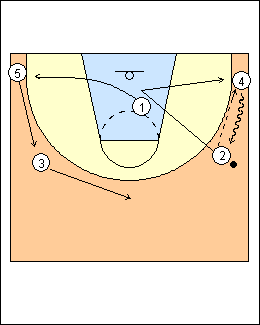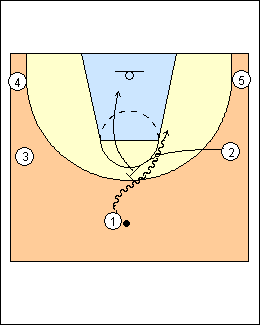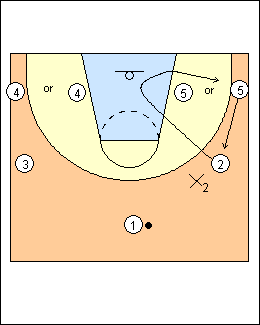Youth motion
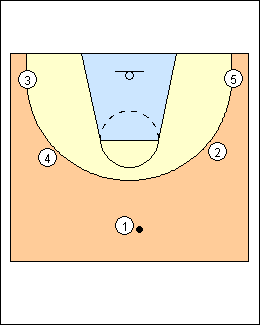 | 1 Below are a few youth-oriented motion offences: 1) Steve Nash MVP 1-2-2 2) Michigan 3) Frankston Blues 4) Cutters 5-out motion 5) David Faucher 6) Kraus, Meyer and Meyer Motion offence is commonly taught to young players because it teaches good basketball skills and principles. A problem is that many players don't yet have the skill set to effectively executive an attack based on passing and cutting, especially against defenders that get in the passing lanes to deny direct passes. Since the idea is to attack the basket, and the easiest way for younger players is by dribbling, they should work on dribble penetration attack and principles. Space the floor so the ball handler always has an open lane to the basket, then move on penetration to create passing angles and make it hard for off-ball defenders to help and recover. If a driver gets stopped, pass to a teammate then it's her turn. This is the basis of the "dribble-drive attack" developed by Vance Walberg and popularized by John Calipari, and movement off penetration is the first concept in Rick Torbett's "read and react" offence. See Offences - Petitgoue open post, Huggins open post, Petitgoue dribble-drive, and 4-out 1-in motion. |
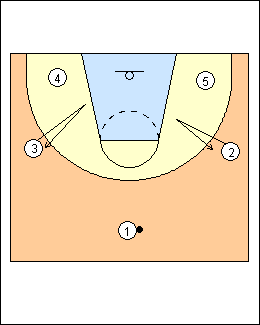 | 1) Steve Nash MVP Basketball A 1-2-2 offence for youth 8-10 years old. There is a point guard, two wings, and two forwards. The wings v-cut to get open. |
 | 3 Progressions a) Pass and cut 1 passes to 2 (or 3), steps (fakes) away, and basket cuts. 3 and 4 rotate to fill empty spots. Repeat this action on any pass from the point to a wing. |
 | 4 b) Pass and screen away 1 passes to 2, isn't open (the defender is in his face), so he screens away for 3, who lets the screener get close, sets up his man by taking him down a few steps, then comes off the screen shoulder to shoulder. The forwards step in towards the basket in case their defenders help on the screen. |
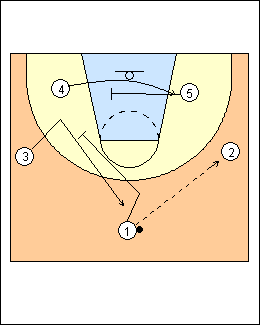 | 5 |
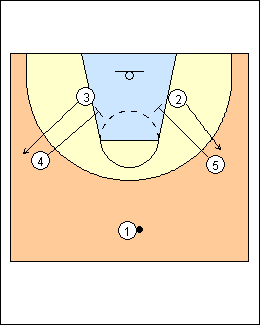 | 2) Michigan (breakthroughbasketball.com) 4 and 5 are the post players. All players will rotate to every spot. As soon as 1 brings the ball upcourt, 4 and 5 downscreen for 2 and 3 then try to seal their defenders behind them and open to the ball. (Entry variations) - 2 and 3 cross under (optionally one screens for the other) and use the downscreen on the other side, see Offence - Seth Greenberg slice - start in inverted stacks with 2 and 3 on the blocks, they use screens to pop out, see Offence - Bill Self high/low motion. |
 | 7 1 passes to 2 (or 3) and screens away for 3 (who comes to the top of the key), 5 cross-screens for 4. Option - 5 can post for 1-2 seconds before screening for 4, 1 should wait until 5 turns to screen before screening for 3. |
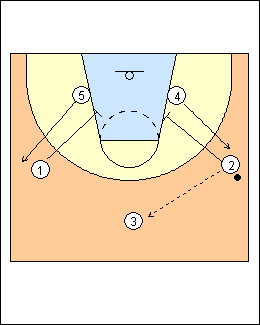 | 8 |
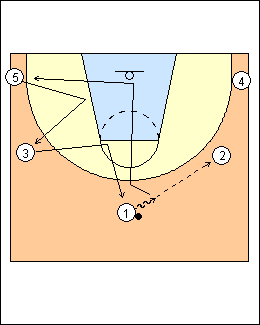 | 3) Frankston Blues U12 Principles of play Layer 1 - Balance, spacing and alignment. Fill the five perimeter spots, 12-15 feet apart, outside the 3-point line, helping to bring the defence away from the hoop so you can attack it, and giving players maximum opportunity for creating, recognizing and attacking space. Chuck Daly - spacing is offence and offence is spacing. Layer 2 - Pass, cut and replace. 1 dribbles off the splitline to shorten the pass to 2 then basket cuts, making a backcut if the defence jumps to the ball or a face cut if the defence doesn't jump to the ball. 1 then exit cuts away from the ball and 3 and 5 v-cut to replace the empty space (always fill open space above you). |
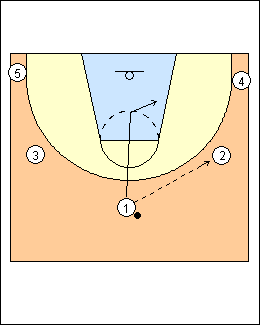 | 4) Cutters 5-out motion (breakthroughbasketball.com) Rules 1. Pass, cut to the basket, then fill the open spot on the baseline. - You can allow a good post player to cut and sit in the post for 2 seconds (shown). 2. Cut only when you pass the ball or when the ballhandler is looking at you. - Backcut when your defender is near the 3-point line. 3. If the player in front of you cuts, replace him. - Wait until the ballhandler is almost done looking at the cutter, this will help with timing and setting up your defender for a backcut or straight cut. (Note that all passers basket cut, not just on point-to-wing and wing-to-corner passes, although this can be a useful teaching progression) |
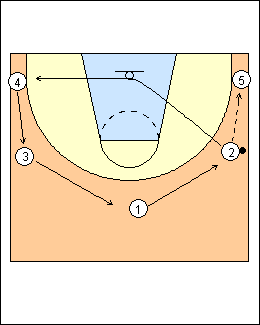 | 5) David Faucher The best way to teach the game at a young level is from a 3-2 formation with a point, two wings, and two corners. This keeps the basket open to score by driving, give and go, passing and cutting, and two-man action. You can change positions to give everyone a chance to handle the ball. From this formation you can - give and go from point to wing or wing to corner (shown) - pass and screen away - pass and ballscreen from point to wing or wing to corner - dribble handoff from point to wing or wing to corner. |
This page was made with Basketball playbook from Jes-Soft


